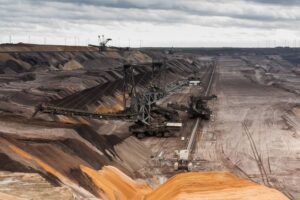Tesla’s $1 Trillion Bonus: How Many Teslas Would Musk Have to Sell to Earn It?
![]() Ujjwal Maheshwari, September 8, 2025
Ujjwal Maheshwari, September 8, 2025
When Tesla’s board announced a jaw-dropping US$1 trillion bonus for Elon Musk, markets didn’t quite know whether to applaud or shake their heads. The figure is more than twice Musk’s current net worth and is unlike anything we’ve seen in corporate history. It naturally raises a simple but striking question: how many Teslas would need to be sold to make that kind of money?
This isn’t only about a big, flashy number. It shows how tightly Tesla’s future is tied to Musk’s leadership, and how bold the company’s ambitions have become. The bonus is designed to push Tesla beyond being just an electric car maker, towards becoming a force in energy, robotics and artificial intelligence. By breaking down the maths behind the deal, we can see both the massive opportunity and the serious risks that come with it.
What are the Best ASX Dividend stocks to invest in right now?
Check our buy/sell tips
Deconstructing the Bonus
The structure of Musk’s latest pay package is unlike anything previously seen in corporate America. It is divided into 12 tranches, each tied to an extreme milestone that combines operational and financial performance. The most eye-catching requirement is Tesla achieving an overall market capitalisation of US$8.5 trillion, a valuation that would eclipse Apple, Microsoft, and Saudi Aramco combined at their 2025 levels. Each tranche also links to demanding targets around vehicle deliveries, profitability through EBITDA, and the successful rollout of new businesses, including a fully operational robotaxi network and the commercialisation of Tesla’s humanoid robot project, Optimus.
If Tesla manages to meet every milestone, Musk would be entitled to as much as 12% of Tesla’s outstanding stock. To contextualise, that’s more than the combined equity stakes of many entire institutional investors. It represents not only one of the largest CEO compensation schemes in history but also one of the boldest experiments in tying executive wealth directly to company performance. Investors must ask whether these targets are designed as realistic goals or whether they function more as motivational theatre intended to lock Musk into the CEO seat for the next decade.
Converting Value into Car Sales
To appreciate the sheer magnitude of this Tesla $1 trillion bonus, it helps to translate the numbers into something tangible. At Tesla’s current share price of about US$350 per share, a US$1 trillion award would equal roughly 423 million shares, the actual number tied to the package’s vesting structure. That represents about 12% of Tesla’s current outstanding shares, a significant level of dilution if fully vested.
Now let’s convert this into vehicles. Based on Tesla’s reported financials, the company’s average selling price per car is estimated at about US$45,000, though this figure varies by model and quarter. If Musk’s payout were translated into pure car sales, it would equal roughly 22 million vehicles. That number alone is breathtaking. For comparison, Tesla delivered about 1.77 million cars in 2024, a record figure but still far below Toyota’s annual output. This means Musk’s bonus in car equivalent terms is more than ten years of current output. Even if Tesla continues scaling production in Germany, China, and its planned Mexican Gigafactory, bridging that gulf through cars alone is improbable.
This is why the package is not truly about cars; it’s about Tesla transforming into a diversified AI, robotics, and energy company. Still, the Tesla Musk bonus car equivalent helps investors grasp the almost unimaginable scale of the reward.
Contextualising the Scale
Numbers on a page can sometimes lose meaning, so it’s worth comparing Musk’s bonus with broader automotive benchmarks. Toyota, the world’s largest automaker, sells around 11 million vehicles annually, underscoring the gap between Tesla’s current scale and industry leaders. Tesla’s global deliveries of about 1.77 million cars are only a fraction of that. For Musk’s bonus to be matched in pure automotive sales, Tesla would need to more than double Toyota’s global output for two years straight. That is something no new entrant in the automotive space has ever accomplished.
On top of that, Tesla faces the physical limitations of manufacturing expansion. Building new Gigafactories requires billions of dollars of capital expenditure, long lead times for permits, construction, and supply chain logistics. Even with Tesla’s reputation for rapid scaling, no analyst expects it to cross 20 million units annually before 2030. This illustrates the fundamental point: Musk’s trillion-dollar award is not designed to be achieved through cars alone. It requires entirely new industries, robotaxis, humanoid robots, AI services, and energy systems to succeed at a massive scale.
This is why the package is both fascinating and controversial. It sets a vision where Tesla isn’t judged against Volkswagen or Toyota, but against the total addressable market of global transport and robotics combined. Investors have to decide whether that vision is credible or closer to fantasy.
Why It Matters
The sheer size of the award makes it a lightning rod for shareholder debate. From an investor’s standpoint, the Elon Musk compensation analysis highlights several key issues. First is dilution. If Musk earns up to 12% of Tesla’s equity, existing shareholders will own proportionally less of the company unless Tesla’s market capitalisation grows in parallel. The dilution effect is not trivial; large pension funds and institutional investors may see it as an erosion of their long-term value.
Second is corporate governance. Tesla’s board has long been criticised for its close alignment with Musk, with several directors having long-standing business or personal ties to him. Granting a trillion-dollar package reinforces the perception that Tesla’s governance is unusually CEO-centric. That raises questions about whether the board is acting in the best interest of all shareholders, especially minority ones, or simply bending to Musk’s influence.
Third is execution risk. While Musk has an unmatched track record of defying sceptics, turning Tesla from a niche EV player into the world’s most valuable automaker, the next milestones are even more ambitious. Developing a robotaxi fleet requires full regulatory approval of autonomous driving in multiple jurisdictions, while scaling humanoid robots into everyday workplaces requires breakthroughs that no competitor has yet achieved. Investors must seriously ask: are these targets achievable in the timeframe, or are they aspirational carrots dangled to retain Musk?
These questions matter because they go directly to Tesla’s valuation. If markets perceive the milestones as unrealistic, then the package becomes symbolic theatre. If, however, Musk can deliver even half of the targets, Tesla could justify valuations far beyond today’s levels.
Beyond Cars: The Broader Bet
We’re not simply talking about selling more Teslas. The real bet here is on Tesla morphing into a multi-industry juggernaut. Musk has repeatedly argued that the company’s future valuation will come less from car sales and more from software, energy systems, and robotics. The robotaxi network, if successful, could generate recurring revenues at margins more akin to software than manufacturing. Similarly, the Optimus humanoid robot, if commercialised, could open up an entirely new market worth trillions of dollars.
The Tesla pay package explained through this lens looks less like an automotive bonus and more like a venture capital bet on multiple moonshot projects. In our view, the package serves as a statement: Musk will only earn if Tesla redefines multiple industries. This also helps explain why investors remain divided. Bulls argue that Musk has repeatedly achieved the impossible, from landing reusable rockets at SpaceX to building the world’s largest EV brand. Bears counter that Tesla has yet to prove profitability in areas beyond cars and energy storage.
For investors, the key question is whether Tesla’s bold diversification into AI, robotics, and mobility platforms justifies granting Musk such a staggering potential reward. If the answer is yes, then the package is a shrewd way to lock in the world’s most visionary CEO. If no, then it represents a governance risk of historic proportions.
The Bottom Line
The Tesla $1 trillion bonus is as much about narrative as it is about economics. By dangling such an extraordinary carrot, Tesla signals to markets that it intends to leapfrog beyond traditional auto manufacturing. Whether that’s achievable is the trillion-dollar question.
For shareholders, the package underscores both the upside and the risk of holding Tesla stock. On one hand, if Musk delivers, Tesla could become the world’s most valuable company by a wide margin, with AI and robotics revenues dwarfing automotive. On the other hand, shareholders must weigh the dilution risk, the potential for over-promising, and the concentration of power in Musk’s hands.
The Tesla pay package explained is, therefore, best understood as a bet on Musk himself. Investors are not simply buying exposure to an automaker. They are buying into a vision where Tesla becomes the backbone of global mobility, automation, and energy. If those revolutions materialise, Musk’s trillion-dollar payout may look like a bargain. If not, it could become one of the most controversial compensation schemes in corporate history.
FAQs on Investing in Tesla’s Bonus Story
- How is Elon Musk’s new pay package structured?
It is divided into 12 tranches, each requiring Tesla to hit extraordinary milestones, including a market cap of US$8.5 trillion, steep delivery growth, profitability gains, and new revenue from robotaxis and humanoid robots.
- How much of Tesla could Musk own if the package fully vests?
Musk could end up with up to 12% of Tesla’s equity, representing one of the largest equity awards ever made to a CEO and cementing his control over the company.
- What is the Tesla Musk bonus car equivalent?
At an average vehicle price of US$45,000, Musk’s potential payout equates to about 22 million cars, over ten years of Tesla’s current delivery volumes.
- What risks does this package pose to shareholders?
Shareholders face dilution of their holdings, governance risks from a CEO-centric board, and the possibility that Tesla’s ambitious milestones in robotics and AI may never be achieved at scale.
- Is this pay package achievable through cars alone?
Almost certainly not. Even if Tesla doubled Toyota’s annual production, the maths falls short. Future value would need to come from AI services, software, and robotics.
Blog Categories
Get Our Top 5 ASX Stocks for FY26
Recent Posts
Webjet Sinks 22 Percent After Softer H1 Results and Weak Domestic Demand
Webjet Falls 22 Percent After H1 Revenue Dips and Domestic Flight Demand Softens Webjet (ASX: WJL) opened down 22 percent…
Javelin Minerals Jumps 2,900 Percent on Capital Consolidation
A Sharper Share Register Sets Javelin Minerals Up for Its Next Corporate Stage Javelin Minerals (ASX: JAV) surged an extraordinary…
Why Are Droneshield Shares Dropping and Should You Be Worried
DroneShield Selloff Tests Nerves, But Fundamentals Tell a Different Story DroneShield (ASX: DRO) experienced a sharp selloff this morning that…



